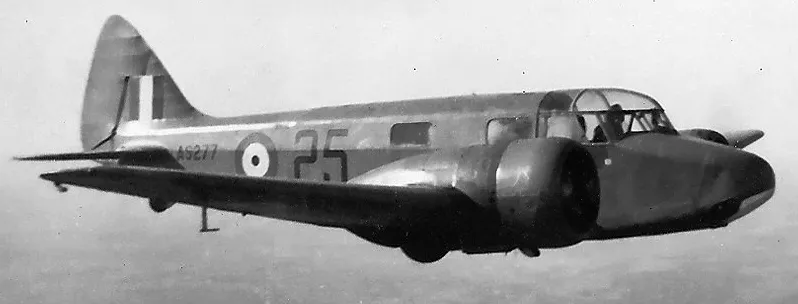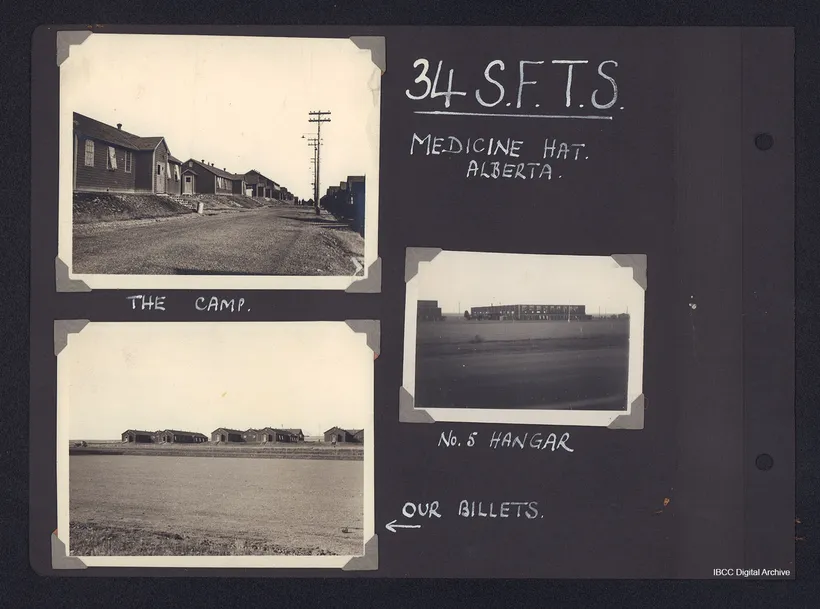Simms, Bertram Charles Hollins (Flying Officer)
Killed in Flying Accident 1941-July-03


Birth Date: 1915
Born:
Parents: Son of Bertram B. Simms and Lily Simms, of Newcastle-under-Lyme, Staffordshire, England
Spouse: husband of Ada Simms, of Newcastle-under-Lyme
Home:
Enlistment:
Enlistment Date: unkown date
Service
RAFVR
Unit
34 SFTS- Service Flying Training School (RAF)
Base
Medicine Hat, Alberta, Canada
Rank
Flying Officer
Position
Service Numbers
86659
Crew or Other Personnel
Oxford V3268
Oxford serial: V3268

Airspeed A.S. 10 Oxford Mk. II, RCAF (Serial No. AS277), 25, in flight over Saskatchewan, 1942.
The Airspeed AS.10 Oxford was a twin-engine monoplane aircraft developed and manufactured by Airspeed. It saw widespread use for training British Commonwealth aircrews in navigation, radio-operating, bombing and gunnery roles throughout the Second World War.
The Oxford was developed by Airspeed during the 1930s in response to a requirement for a capable trainer aircraft that conformed with Specification T.23/36, which had been issued by the British Air Ministry. Its basic design is derived from the company's earlier AS.6 Envoy, a commercial passenger aircraft. Performing its maiden flight on 19 June 1937, it was quickly put into production as part of a rapid expansion of the Royal Air Force (RAF) in anticipation of a large-scale conflict.
As a consequence of the outbreak of war, many thousands of Oxfords were ordered by Britain and its allies, including Australia, Canada, France, New Zealand, Poland, and the United States. Following the end of the conflict, the Oxford continued to achieve export sales for some time, equipping the newly formed air forces of Egypt, India, Israel, and Yugoslavia. It was considered to be a capable trainer aircraft throughout the conflict, as well as being used a general-purpose type. A large number of Oxfords have been preserved on static display. Wikipedia
Aircraft Images
Oxford V3268
Oxford Mk. I V3268
Taken on strength at No. 1 Coastal Artillery Cooperation Flight at St. John, Newfoundland. To No. 4 Training Command on 7 May 1941, for use by No. 34 Service Flying Training School at Medicine Hat, Alberta. Category A crash at Medicine Hat at 12:40 on 3 July 1941. Starboard engine caught fire in flight, dug in a wing tip while apparently attempting a forced landing, and was completely burned out. All 2 (or 3?) occupants killed. Cause of fire believed to be fuel venting or leaking from a cracked line onto engine. Had 160:30 flying time when struck off.1941-04-24 Taken on Strength 2019-08-20
1941-July-03 Accident: 34 Service Flying Training School Loc: Medicine Hat Names: Belcher | Simms
1941-09-01 Struck off Strength Struck off, reduced to spares and produce 2019-08-20
Unit Desciption
34 SFTS (34 Service Flying Training School)
Graduates of the EFTS "learn-to-fly" program went on a Service Flying Training School (SFTS) for 16 weeks. For the first 8 weeks the trainee was part of an intermediate training squadron; for the next 6 weeks an advanced training squadron and for the final 2 weeks training was conducted at a Bombing & Gunnery School. The Service schools were military establishments run by the RCAF or the RAF.
There were two different types of Service Flying Training Schools. Trainees in the fighter pilot stream went to an SFTS like No. 14 Aylmer, where they trained in the North American Harvard or North American Yale. Trainees in the bomber, coastal or transport pilot stream went to an SFTS like No. 5 Brantford where they learned multi-engine technique in an Airspeed Oxford, Avro Anson or Cessna Crane.

For More Information on RCAF Station Medicine Hat see here
RCAF.Info - RCAF Station Medicine Hat AB
RCAF.Info - Relief Landing Field Holsom AB
RCAF.Info - Relief Landing Field Whitla AB
![]() Bomber Command Museum Of Canada - 34 SFTS
Bomber Command Museum Of Canada - 34 SFTS
David Carter History Of NO34 SFTS
Project 44 BCATP